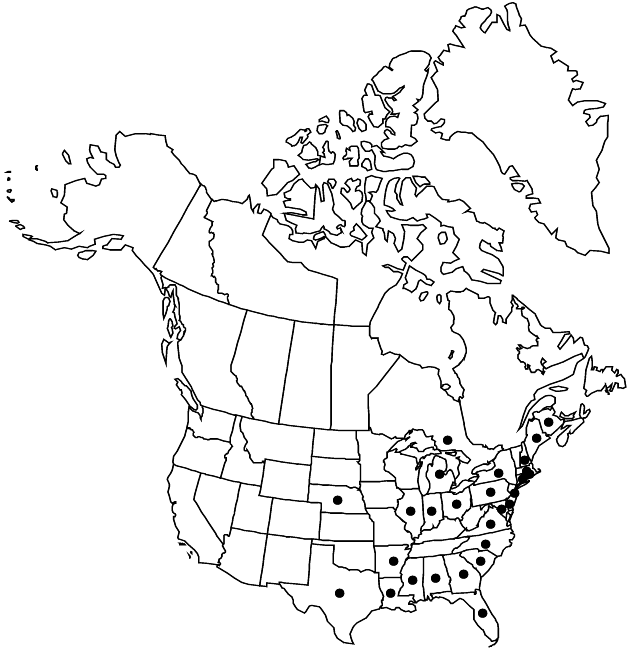Symphyotrichum subulatum var. subulatum
Plants 30–120 (–150) cm. Stems simple. Heads (10–) 30–100 (–150), in elongate, pyramidal, much branched arrays. Involucres (5–) 6–7 (–8.2) mm. Phyllaries 20–30, subulate to lanceolate, narrow, green zones narrowly to broadly lanceolate, extending phyllary length. Ray-florets 16–30 in 2 series; laminae white (drying white or lavender), (1.3–) 1.5–2.6 (–3.1) × 0.2–0.5 mm, shorter to slightly longer than pappi, drying in 0–1 coil (apices often deeply lobed). Disc-florets 4–10 (–13); corollas 3.8–4.6 (–4.9) mm. Cypselae (1.2–) 1.5–2.5 mm; pappi (3.5–) 4–5.5 mm. 2n = 10.
Phenology: Flowering midsummer–autumn(–winter).
Habitat: Salt marshes, brackish marshes, tidal marshes, salted highways
Elevation: 0 (100–300 inland) m
Distribution

N.B., Ont., Ala., Ark., Conn., Del., Fla., Ga., Ill., Ind., La., Maine, Md., Mass., Mich., Miss., Nebr., N.H., N.J., N.Y., N.C., Ohio, Pa., R.I., S.C., Tex., Va., in Asia, Africa
Discussion
Variety subulatum is disjunct in northern New Brunswick. It is apparently introduced around salt mines and other salted habitats in Ontario, Michigan, and Ohio.
Selected References
None.
Lower Taxa
"thin" is not a number.